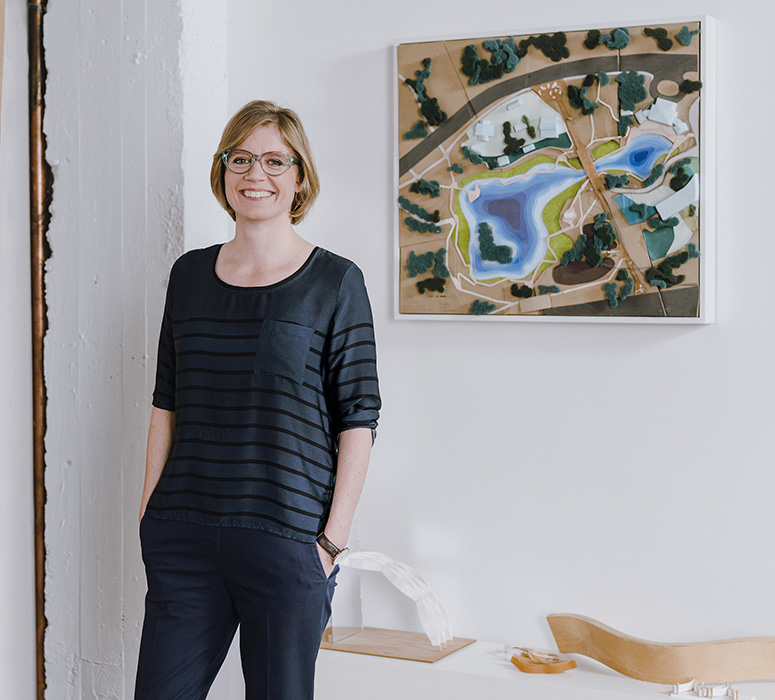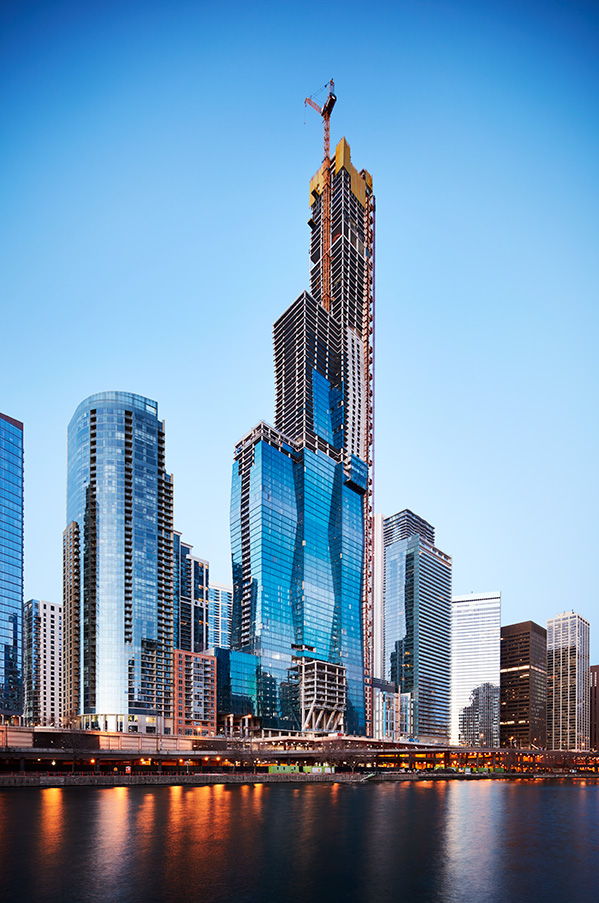Building Sustainability
M
uch more than an aesthetic flourish, the glass gradient represents both an achievement in building material advancement and a step forward in energy-efficiency, two areas of architecture that St. Regis Chicago’s design principal, Juliane Wolf (ARCH ’01), has been pursuing her entire career.
—Juliane Wolf

Sometimes sustainable design is very focused on energy performance metrics, But we think of creating spaces that are beautiful and will be used for many years to come as another aspect of sustainability. Beauty is important because that is ultimately what draws people in and creates beloved environments.”
—Juliane Wolf
Now a partner at Studio Gang, Wolf grew up in Germany surrounded by architects—her father, grandfather, great aunt, uncle, and currently, her nephew. She says that she came to Illinois Institute of Technology because its Bauhausian and Miesian ties have given the school a good reputation in her home country.
Illinois Tech was also the place where Wolf met Jeanne Gang, Studio Gang founder and a former professor at the College of Architecture. Wolf became an intern at Gang’s studio in 1999, just two years after its founding.
“When I started as an intern there were only a handful of people,” says Wolf. “It was such an amazing experience. I knew from the moment that I interned there that it was something really special. Jeanne’s vision was immediately inspiring.”
Wolf returned to Studio Gang after graduating first in her class and helped to bring some of the firm’s earliest projects, such as Bengt Sjostrom Starlight Theatre in Rockford, Illinois, to life. She only stayed until 2004, departing for Berlin to do what many architects do at some point in their careers: leave to pursue independent practice to find her creative voice.
“As much as I admired Studio Gang, I knew that I wanted to do some projects on my own, which is just part of growing as an architect,” says Wolf. “I wanted to know what I would do if I did something by myself.”

It ended up being a more hands-on experimental study of materials by way of her creative practice with Eva Tuerks (ARCH ’98), Büro Blickpunkt, and a rigorous study in sustainable design at the Architectural Association School of Architecture in London. Wolf soon returned to Studio Gang—and just as she had grown as an architect, so, too, had the firm, taking on larger, more impactful projects. One of her first assignments? Chicago’s St. Regis Chicago.
Because the building has an undulating frustum shape (a truncated pyramid), one of Wolf’s first moves was to measure the thermal conditions of the three towers at their widest and narrowest points. What she found was a surprising variance in the performance of the units caused by the changing ratio of window glazing to floor area.
“I shared this with Jeanne, and that started our exploration of how to tune the glass to address that performative issue,” says Wolf. “The skin is the aspect of the building that is the most responsive to the environment.”

From there, the design team developed the solution in the form of the glass gradient, which gets darker at the tower’s narrowest points to tune solar heat gain to the unit size, thus reducing the energy required to keep the interior at a comfortable temperature.
In addition to St. Regis Chicago, Wolf is working on the new O’Hare International Airport Global Terminal, filled with natural materials and lush green spaces, and the Beloit College Powerhouse, a former coal-burning power plant turned student union. The Powerhouse, whose first phase opened in February, features a radiant panel and slab system that uses energy from the water in the adjacent Rock River to heat and cool the building, which is more sustainable than traditional air-conditioning systems. Besides these features being energy-saving measures, Wolf believes these elements create workspaces that are both beautiful and healthy.